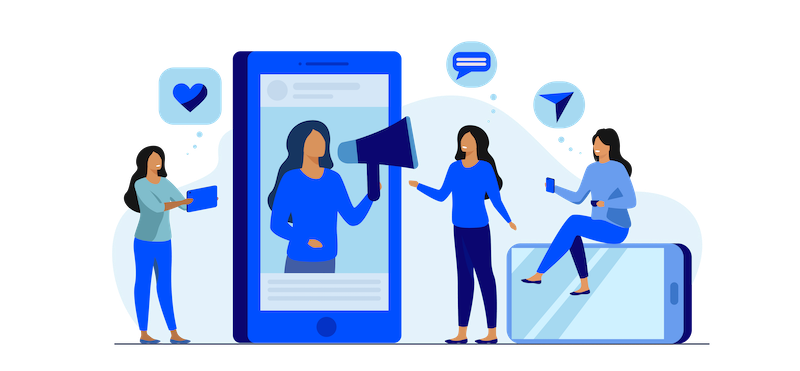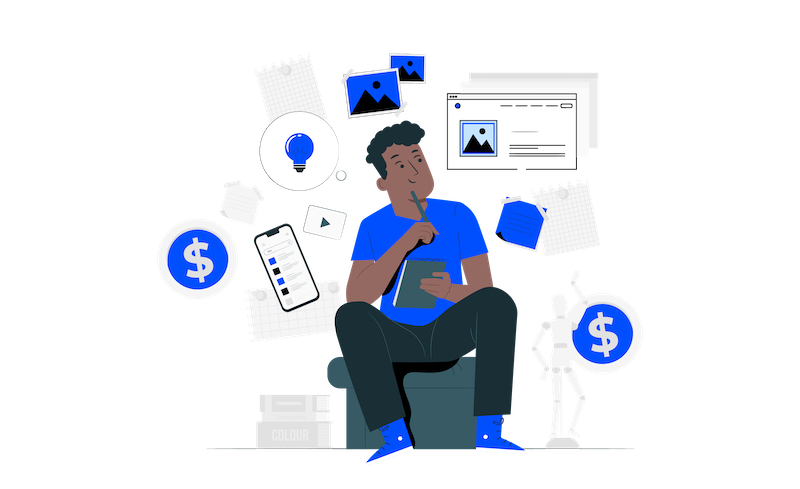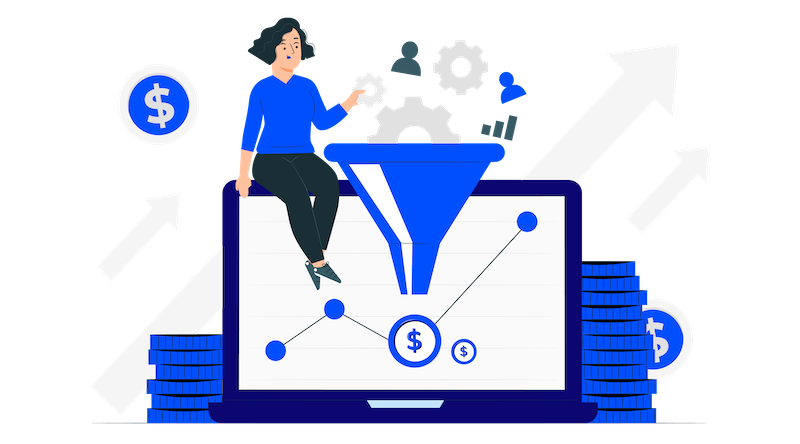The Ultimate Guide To Facebook Ad Objectives
Last Update: 13 June 2022
What Are Facebook Ad Objectives?
To understand how to create a Facebook ad, you first need to know what objectives are.
When you choose an objective, Facebook analyzes its user data and serves your ads to people in your target audience who are most likely to take the action you want. Whether you want your audience to download your app, make an online purchase, or visit your store, Facebook Ads can help you connect with the right customers.
Facebook breaks objectives up into three categories (with various options under each):
Awareness: To increase awareness of a product or brand in order to drive traffic or sales later on.
Consideration: To build interest in a product or service so that when people are ready to buy, they will choose yours over others’.
Conversion: To generate a specific outcome such as getting someone to install software on their computer or making a purchase from an online store.
Awareness Objectives for Facebook Ads

In the awareness stage, you’ll want to target people at the top of your funnel. These people either don’t know they have a problem to solve or know they have a problem but haven’t found a solution.
Campaigns with Facebook ad objectives in the awareness stage likely won’t lead to sales directly. The purpose for awareness campaigns is to attract people who are likely to go deeper into your sales funnel and gather enough data to create custom audiences.
Here are some examples of Facebook Ads objectives for the awareness stage:
Brand awareness Objective
Use this objective when you want to introduce your brand to a wider audience or increase awareness of your products and services. This Facebook objective is ideal when you need to pique the interest of a new audience or stay top of mind with current customers. When you choose this objective, don’t expect your target audience to take additional actions.
You can create ads that show off your brand by displaying photos or videos of your products or services, or by showing them how they can get involved with something in which they already have an interest.
For example, if you own an ice cream shop, create an ad that shows people enjoying their favorite flavors from your shop. If you run a clothing store, create an ad that shows someone wearing one of your outfits and looking great in it!
Reach Campaign Objective
Reach campaign objective is the simplest of all the objectives. Advertisers who choose this objective are mainly interested in reaching as many people as possible.
Reach campaigns are best suited for small businesses that want to get their name out there, but don’t have a budget large enough to run ads in other objectives. The main goal of reach ads is to reach as many people as possible. If you run these ads often enough, you can increase ad recall and make your brand more recognizable to your target audience.
If you own a smaller company that isn’t established yet, running ads in the reach campaign objective could be beneficial, as doing so has the potential to expand a small audience.
However, if your business has an established audience, it might make more sense to run ads in other objectives instead of reaching as many people as possible through reach campaigns.
Consideration Objectives for Facebook Ads

Facebook ad objectives in the consideration stage are for targeting people in the middle of your funnel who are already aware of your products and services. To nurture this interest, create ads that educate and encourage engagement.
These people might not be ready to buy yet, but they are the most likely candidates and could use a nudge in the right direction.
Consideration-stage ads focus on driving awareness, engagement and consideration among potential customers. They can be used to:
- Increase brand awareness by increasing your reach with people who have not yet heard about you or your product or service;
Introduce new products or services;
Encourage engagement through quizzes, polls or other interactive elements;
Increase website traffic and conversions (if your site is set up to convert users);
Reach out to users who have previously shown interest in your brand or product line (e.g., by liking posts about it), but have not taken action yet;
Traffic Campaign Objective
The Traffic objective lets you send your target audience to a destination outside of Facebook, such as a blog post, podcast episode, landing page, or app. You can also retarget the same Facebook users in future campaigns.
The following are examples of traffic campaigns:
- Send users to an external website (such as your company website) to download a PDF file or view a video that you’ve uploaded to YouTube.
- Create an ad that links to a blog post on your company site. After someone clicks on the ad and visits your blog, they’ll see an offer from you in their News Feed. If they click on the offer, it will take them directly back to your blog post.
Create an ad that leads people directly into an app on their mobile device after they click through from the ad — for example, if you’re marketing a game app and want to reach new players who haven’t yet downloaded it yet.
Engagement Campaign Objective
With this objective, Facebook will show advertisements to the people that they determine will engage with your content, such as actually like, comment, share or click on it.
This advertisement has three subcategories: post engagements, page likes, and page event responses.
Post Engagements:
This objective is used when you want to get more engagement on your posts. For example if you are an author who wants to spend money on Facebook ads in order to increase the amount of likes and comments on your posts.
Page Likes:
This objective is used when you want to get more fans for your page. For example if you have a clothing store and want to advertise it on Facebook so that people will come and like your page so that they can be updated when new products are uploaded by your company.
Page Event Responses:
This objective is used when you want to get more responses from people about specific events or actions (for example RSVPing) that occur on your page. For example if you have an event happening in the next week where people can RSVP so that they know how many people are going to attend, then this could be an excellent way for you to promote this event using Facebook ads.
App Installs Campaign Objective
Facebook’s app install objective helps drive mobile app instalments by directly approaching the users and taking them to the online app marketplace such as Google Play for Android or App Store for iOS.
It’s best to use this objective if you have an app that you want to get out there. Facebook directly targets the people who are known to download apps from these types of ads, maximising the chance that your audience will download your app as well.
Why do I need this?
The app install objective is useful if you have an existing mobile app with a large user base, but don’t have any organic traffic coming in. This objective can be used in conjunction with other objectives such as lead generation or website conversions in order to increase your overall ROI and grow your business.
Video Views Campaign Objective
The video views campaign objective is a way to optimize your ads for the number of views that last longer than two consecutive seconds or 15 seconds and longer.
With the video views campaign objective, you can optimize your ads for views that last longer than two consecutive seconds or 15 seconds and longer.
The two consecutive seconds video view option works best if you’re trying to build lookalike audiences for a future campaign, whereas the 15 seconds and longer option works best for product videos and user-generated-content testimonials.
Lead Generation Campaign Objective
Use the Lead Generation objective when you want to collect customer data on Facebook without driving traffic to your website.
Facebook Lead Generation ads allow you to capture information like names, email addresses, and phone numbers. The social media platform streamlines the process by auto-populating users’ personal information when available.
Lead Generation allows you to target customers who are interested in learning more about your business or product. You can also use it to build an audience for remarketing campaigns and retargeting ads (banners).
If you have a brick-and-mortar location, use Lead Generation to promote special offers, events and other types of offline marketing activities.
Messages Campaign Objective
The messages campaign objective is a great way to start conversations with your audience on Facebook Messenger. In fact, this is the only campaign objective that lets you automatically start a conversation with people who click on your ads.
The messages objective works well with people who are likely already familiar with Facebook Messenger and enjoy texting. Message ads are great conversation starters. You can ask for peoples’ opinions on certain products or services, take quizzes, and you can even automate responses to save time.
You can also use message ads to send coupons or discounts to customers who have previously bought from you online or in-store. If someone purchases something from one of your stores, they may be interested in other products you sell as well!
Message ads let you communicate directly with people who have already interacted with your business in some way, whether they’ve been to your website before or they’ve purchased from you in the past. These ads don’t require any targeting criteria — just choose the campaign objective and we’ll do the rest for you!
Conversion Objectives for Facebook Ads

The conversion stage is the final stage of your funnel, where prospects become customers. Facebook ad objectives in the conversion stage are best used on hot leads who know your business and have strong buying intent. This objective works best with people at the bottom of your funnel who just need that last push or reminder to buy.
Why should you use this?
If you’re running ads in the conversion stage, you’re likely focused on conversion optimization — increasing your sales without spending more money on Facebook ads. You can use this objective to target people who are ready to buy right now and may be interested in a specific offer or discount.
The conversion stage is also useful if you want to focus on getting as many new customers as possible as quickly as possible. For example, if you run an ecommerce store and want to get new customers through Facebook ads, this is a good objective for that role because it allows you to run ads directly after someone completes a purchase on your website and boosts their chance of making a second purchase from Facebook ads by showing them relevant products or discounts based on their recent purchase history.
Conversions Campaign Objective
Facebook conversions are meant to prompt an action on your website, app, Messenger, or WhatsApp. These actions could be an opt-in, an add-to-cart, or a purchase.
Ads in the conversion campaign objective work best with people who’ve already been through the awareness and consideration stage of your brand and have shown signs that they’re ready to make a purchase.
Conversion campaigns are built around people who have already expressed interest in your product or service. They’ve already been exposed to your ads, but now you want them to take action by clicking through to your website or app and completing a transaction.
Conversion campaigns are ideal if you want to show ads to people who have already visited your site or downloaded your app and taken some sort of action there. If you have an ecommerce business and want people who’ve visited your site recently but haven’t yet made a purchase, then this is likely the campaign objective for you.
Catalog Sales Campaign Objective
The catalog sales campaign objective is a new type of campaign that was introduced in Google Analytics in February 2019. Unlike the conversion campaign objective, the catalog sales campaign objective is made almost entirely for eCommerce stores, as it’s specifically optimised for online shopping.
Rather than promoting one single action that you want from your customer, it will highlight multiple options or products in a slidable list. This objective will show relevant products from your eCommerce store to those most likely to browse them.
The main purpose of this campaign type is to help increase the number of people who convert on your website through their browsing experience rather than clicking through from an ad. This means that you can create a more personalised experience for customers who have already been exposed to your brand through organic search, driving them further down the sales funnel.
Store Traffic Campaign Objective
If you’re a business owner and want to drive traffic to your store, then this campaign is perfect for you. With it, you can attract more customers to your physical locations and engage them on a personal level.
The store traffic campaign objective is great if you own multiple brick-and-mortar stores and want to drive people to visit them. It’s an outstanding option if you’re looking to drive people to your actual physical locations, thus making them engage with your business on a personal level.
If you’re going to use this campaign goal, you’ll need to add your business locations on the Facebook business manager. Through this, the campaign goal will allow you to generate more traffic on your real-life locations, thus driving sales in every store.
Conclusion
For your social media marketing goals, each category plays an important role. The goals that you determine are important to your company and brand, will define which campaign objectives will work best for you. If you need help deciding which category fits into your business objectives, reach out to us at Neu Entity as your Marketing Agency in Singapore and we will be happy to help you!
Let’s Talk!
If what you see here is relevant for you and can help you grow your business or organisation, we’d love to discuss further with you. Drop us a message or schedule an appointment with us.
